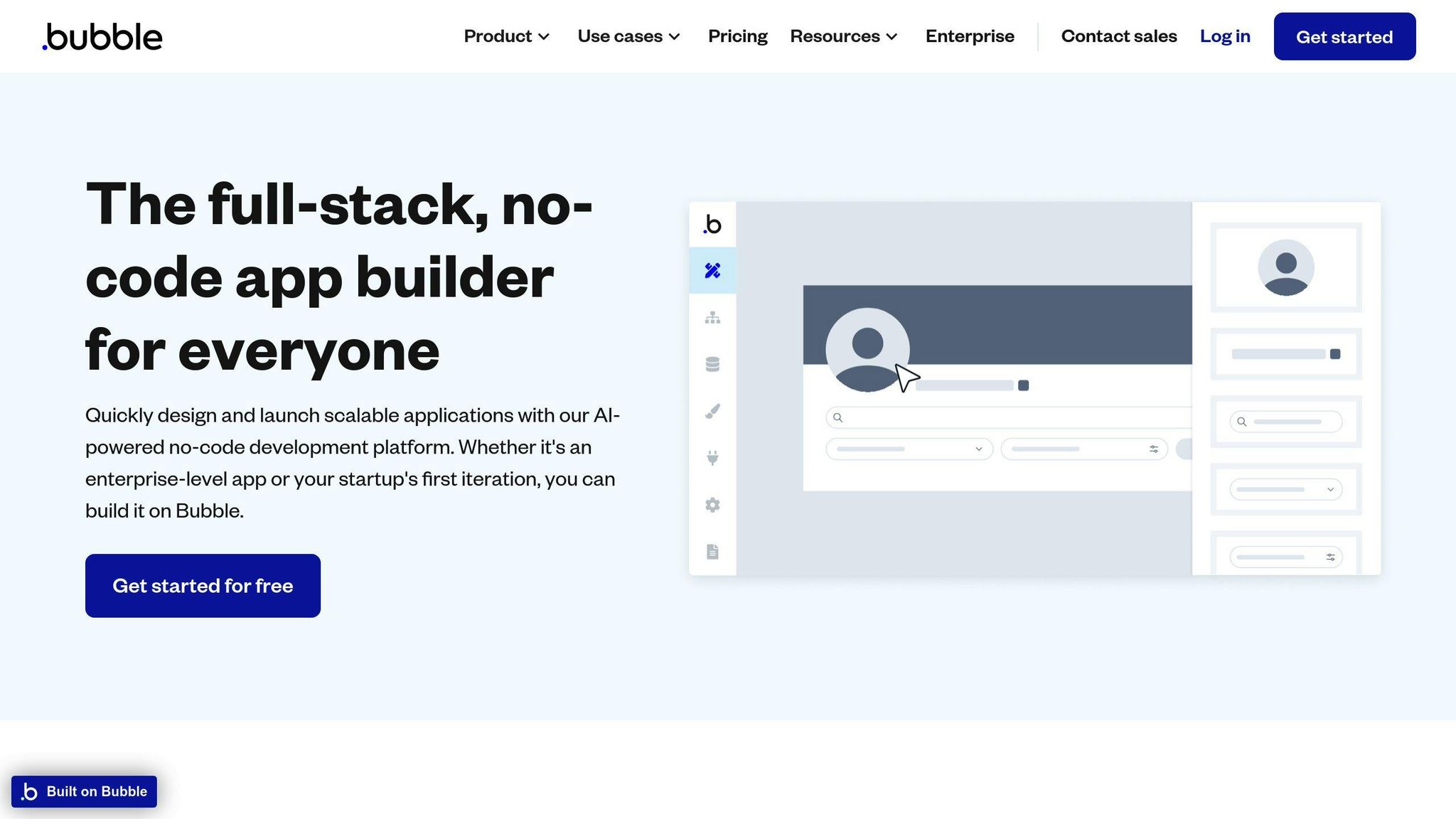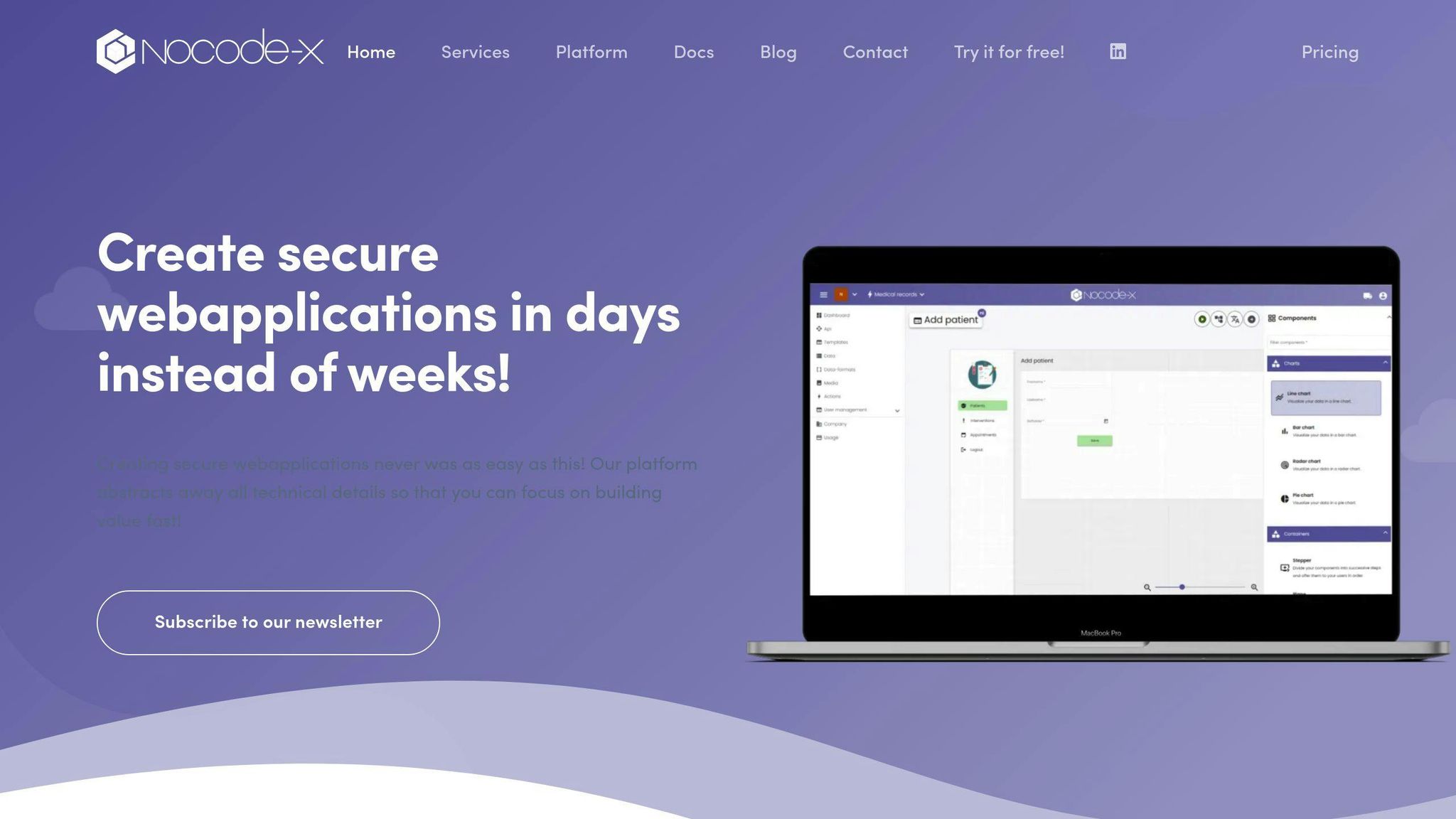No-code platforms are adding version control to match traditional software development. Here's how Bubble, Nected, and NoCode-X handle it:
| Platform | Key Features | Pros | Cons |
|---|---|---|---|
| Bubble | Savepoints, branching, merging | Complex apps, customization | Vendor lock-in, steep learning curve |
| Nected | Atomic commits, advanced merging | Organized process | One-way progress, limited versioning |
| NoCode-X | DTAP system, easy versioning | User-friendly, integrations | Potential data loss |
Quick facts:
- No-code platforms can cut development costs by up to 80%
- Gartner predicts 70% of new apps will use low-code or no-code tech by 2025
When choosing a platform, consider:
- Your team's tech skills
- Project complexity
- Budget
- Long-term scalability
Start with a free version to test before committing. Remember to prioritize security and follow best practices.
Related video from YouTube
1. Bubble

Bubble's version control is simple but powerful. It's built for no-code apps and has two main parts: Development and Live.
Development is where you build and test. It's your playground. Live is what users see. It's locked down to keep things stable.
Here's what Bubble offers:
| Feature | What it does |
|---|---|
| Savepoints | Snapshots of your app |
| Branching | Separate spaces for new features |
| Merging | Combine different branches |
| Rollback | Go back to old versions |
Bubble doesn't do branching like Git. Instead, it has "feature branching." This lets you make copies of your app for big changes.
To turn on version control:
- Open your app editor
- Hit the Settings tab
- Find Version Control
- Switch it on
"Version control lets developers innovate without fear." - Jack Anderson, Bubble expert
This shows why version control matters. It lets you try new things without breaking your app.
Quick tips:
- Build new stuff in Development
- Test before going Live
- Use savepoints as backups
- Make a pre-launch checklist
- Fix merge issues by hand
Bubble tested this system a lot. Over 600 merges, no lost work, no major bugs.
For teams, Bubble has permission settings. This helps people work together safely.
Bubble's version control isn't as fancy as coding platforms. But it gets the job done for no-code developers.
2. Nected

Nected isn't your average version control tool. It's built for no-code teams who want to boost productivity and keep things in check.
Here's what makes Nected stand out:
| Feature | What It Does |
|---|---|
| Atomic commits | Saves changes as one unit |
| Advanced merging | Mixes work from different branches |
| Code review | Checks changes right in the tool |
| Continuous integration | Tests new code automatically |
Nected loves Trunk-Based Development. That means:
- Merging often
- Making smaller changes
- Smoother workflow
With Nected's Versioning Control, you can:
- See what changed in your workflow
- Look at old versions
- Jump back to any version you want
No more workflow headaches!
They've also got a Maker-Checker Approval Flow. It's like a double-check system to catch mistakes early.
"Versioning Control empowers you to track every change in your workflows, view previous versions, and revert to any of them when necessary." - Nected Team
But Nected's not just about version control. It's part of a bigger package:
- No-code rule engine
- Workflow automation
- Fraud detection tools
It's perfect for teams who need more than just version control.
Want to use Nected like a pro? Here's how:
- Use templates to kickstart workflows
- Test before you go live
- Keep your Decision Table up-to-date
Nected's not just tracking changes - it's making the whole development process smoother and faster.
sbb-itb-b66d530
3. NoCode-X

NoCode-X isn't your average no-code platform. It's got a killer feature: a built-in version control system that's actually easy to use.
Here's the deal:
NoCode-X uses a DTAP street system. It's just a fancy way of saying you've got four stages for your app:
| Stage | What It's For |
|---|---|
| Development | Building your app |
| Test | Checking if it works |
| Acceptance | Getting user approval |
| Production | Going live |
Making a new version? It's dead simple. Name it, describe it, done.
Want to move your app up the chain? Just click the check mark. But heads up: once you move up, there's no going back.
NoCode-X plays nice with other tools too. Hook it up to JIRA, Outlook, or Trello, and it'll ping them when you make or promote a version.
They claim you can build apps up to 70% faster and cheaper than traditional coding. How? They've got over 30 pre-made components you can use.
Got a bug? You've got options:
1. Rollback: Quick and dirty. Could fix things in 5 minutes.
2. Roll-forward: Fix the bug, make a new commit. Takes about an hour.
3. Revert: Undo the buggy code. Fast, but still needs deployment time.
To get the most out of NoCode-X:
- Make new versions after big changes
- Test thoroughly before moving to acceptance
- Use those integrations to automate your workflow
- Keep your team in the loop about version status
Bottom line: NoCode-X's version control makes app development smoother, even if you can't code. It gives you a clear path from idea to live app, without the usual headaches.
Strengths and Weaknesses
Let's break down how version control works in these NoCode platforms:
| Platform | Strengths | Weaknesses |
|---|---|---|
| Bubble | - Big creator community - Responsive layouts - Lots of customization |
- Not for beginners - No code export - Tough to learn |
| Nected | - Clear dev stages - Easy versioning - Project tool integrations |
- One-way progress - Limited version control info |
| NoCode-X | - User-friendly version control - Clear dev stages - Multiple bug fixes - External tool integrations |
- Possible data loss - Limited change reversions |
Each platform handles version control differently:
Bubble is great for customization but watch out for vendor lock-in. As one ProductHunt user said: "Bubble's flexible, but I worry about being stuck with them."
Nected keeps things organized with its development stages. But it's a one-way street. A project manager told us: "Clear stages help, but sometimes we wish we could go back."
NoCode-X makes version control easy and plays nice with other tools. Just be careful when promoting versions to avoid losing data.
When picking a platform, think about your team's skills, project needs, and future plans. Building a complex web app with some tech know-how? Bubble might be your jam. Need a clear development process? Look at Nected or NoCode-X.
Wrap-up
Let's break down what we've learned about Bubble, Nected, and NoCode-X:
| Platform | Pros | Cons |
|---|---|---|
| Bubble | Complex apps, customization | Vendor lock-in, learning curve |
| Nected | Organized process | One-way progress, limited versioning |
| NoCode-X | User-friendly versioning, integrations | Potential data loss |
Your choice depends on your team and project:
- Bubble: Great for complex web apps if you've got some tech skills.
- Nected or NoCode-X: Better for clear development processes.
Here's the kicker: no-code platforms can slash development costs by up to 80%. And Gartner says 70% of new apps will use low-code or no-code tech by 2025. That's huge.
When picking a platform, think about:
- Your team's tech skills
- Project complexity
- Budget (from free to $500+/month)
- Long-term scalability
Don't forget security. No-code platforms can have risks, so stick to best practices.
Pro tip: Start with a free version to test the waters before committing.
FAQs
Which tool is used for version control?
Git is the go-to version control system for most developers. It's free, open-source, and distributed, letting you:
- Track code changes
- Work with your team
- Keep a full backup on your computer
Fun fact: Over 93% of developers use Git, according to Stack Overflow.
But NoCode platforms handle version control differently:
| Platform | Version Control Approach |
|---|---|
| Bubble | "Development" and "Live" versions |
| Nected | Organized development process |
| NoCode-X | User-friendly versioning |
For NoCode platforms like Bubble, it usually works like this:
1. Build new features in the development version
2. Test and push changes to live
3. Save important points as restore points
Pro tip: Commit often and write clear messages. It's like leaving breadcrumbs for your future self.
